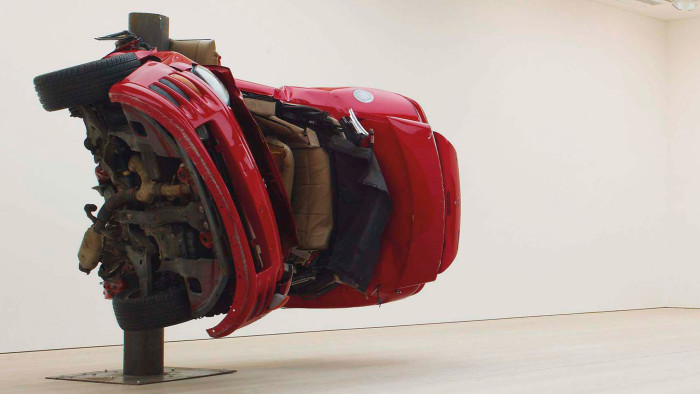Christie’s Saatchi auction

Simply sign up to the Life & Arts myFT Digest -- delivered directly to your inbox.
Charles Saatchi took a sledgehammer to prevailing notions of how to sell work by emerging artists last week. In a single-owner sale staged by Christie’s entitled Thinking Big, he offered 50 large sculptures from his collection, several by artists with little or no auction history and many made from challenging materials such as cardboard, styrofoam, clingfilm and papier-mâché. There were no estimates and no reserves.
Dealers were appalled by this bargain-basement, everything-must-go strategy. Prices for new artists on the gallery circuit are carefully calibrated by dealers – set them too high and collectors will be put off, too low and they won’t take the art seriously. Saatchi’s was a “strong-arm tactic”, says Simon Lee, whose gallery represents Toby Ziegler, one of the artists included in the sale: it seemed deliberately designed to force dealers into bidding to support their artists’ prices.
Ziegler’s huge twin sculptures of abstracted Staffordshire pottery dogs made from intersecting cardboard panels sold for £15,000 at Thinking Big, “around half” the price Saatchi paid for the work when he bought it from Lee in 2008. This is a situation described by one art adviser as “the kiss of death” for an artist’s career.
Several other works also sold for significantly less than they would have cost Saatchi on the primary market. An installation of two crushed cars by the German artist Dirk Skreber made £16,250 but the fabrication costs alone were “€40,000 per car”, says the dealer and collector Kenny Schachter, who knows the piece’s manufacturer.
A circular aluminium and steel staircase six metres high by six metres across by the American artist Peter Coffin made £20,000. “I paid the same amount for a Coffin piece that is the size of a paperweight,” says Schachter, who described several of the prices set at Thinking Big as “shameful undervaluations”.
Christie’s had gambled that the Saatchi name would be enough to propel the auction, which was marketed as a charitable event with all proceeds going towards the maintenance of free admission at the Saatchi Gallery in Chelsea, to the heady heights of other charity ventures such as Leonardo DiCaprio’s “11th Hour” evening auction in New York in May, which raised over $33m for the actor’s wildlife preservation projects. But most of the works in that sale were paintings and, in any case, Saatchi is no DiCaprio.
With hindsight it’s also clear that the timing of the Saatchi sale was disastrously miscalculated. It began at 5pm during an event-packed Frieze week and just two hours before Sotheby’s contemporary art evening auction was due to begin. In total Thinking Big made just over £3m with only a handful of good results. One notable success was Tracey Emin’s “To meet my past”, a four-poster bed with appliqué blankets and cushions, sold for £481,875, the highest price of the sale and a new auction record for the artist. The French-Algerian Kader Attia’s stunning “Ghost”, a vast field of praying silhouettes fashioned out of aluminium foil, made £181,875, also an auction record.
But overall results were poor and several artists are said to be devastated by the disappointing performance of their sculptures.
As for Saatchi? He declined to comment. But, according to Schachter, “He must feel huge relief at not having to pay to store these works any more. He’s cleared his storage facility and sold some difficult pieces. Given the scale and the materials, these pieces need to be looked after like the elderly.”
So what effect will the sale have on the market for artists whose work sold for far less than Saatchi paid for it? Dealers, advisers and market watchers are unanimous on this point: “not much”. Saatchi is no longer the tastemaker he once was and a single poor performance at auction can easily be written off by dealers.
“It won’t stop me from buying the work of these artists,” says the art advisor Emily Tsingou. “The auction was an experiment that didn’t really work. You have to read the results as a hiccup. The days when Saatchi could make or break an artist’s career are over.”
Comments